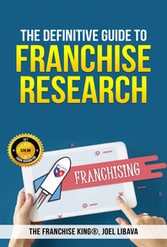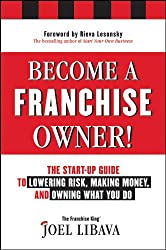
It’s crucial for you to pay attention to the trends in franchising. Why?
Because, like everything else in our fast-paced world, they’re ever-changing. Plus, it’s smart to stay ahead of the game.
But how can you stay on top of the constant shifts taking place in the franchise industry?
Above all, you need to bookmark this webpage, as I’m going to update it anytime a new trend in franchising appears.
With this in mind, here’s what the trends are now, and what the franchise trends have looked like in previous years.
Current And Past Trends In Franchising

The most current trends in the franchise industry involve food delivery and the technology behind it.
But, as you’ll see, the franchise trends for 2021 are about more than food franchises.
2020 Trends
Here’s how I started my 2020 article on the trends in franchising:
With a booming economy (trending upward as of this writing), reasonable small business loan rates, and a large number of consumers more than willing to part with their money, I’m looking for the franchise industry to rock* in 2020
Unfortunately, I needed to add the “*” to my article a few months in to 2020. You know why, right?

But as you’ll see, I was right about one thing in my 2020 Franchise Trends article. And it’s something that just about every franchise business is doing now.
2018 Franchising Trends
My focus for the 2018 franchising trends piece was low unemployment, and how much that would hurt the franchise industry. Check out the two sub-headlines from that article.
“Low Unemployment Is Good For The Economy“

“Low Unemployment Can Be Bad For Franchising“
To learn how employment numbers affect franchising, read my “2018 Franchise Trends And Predictions” article. Why? Because history tends to repeat itself. Plus, it would be smart for you to learn how to choose the right franchise when our economy is doing well.
Trends In Conversion Franchises
Selling new franchise units isn’t the only way to add franchisees to a system. Another way?
Some franchisors have their Franchise Development Representatives contact independent business owners to see if they would consider converting their businesses into franchise businesses.
One sector of franchising that does this well is the printing sector.

That’s because even though a lot of things have gone digital, there’s still a massive need for printed documents. And who does a lot of that printing?
Independent printers who don’t have a lot of name recognition (except in their own circles). But why would printing shop owners want to give up some of their profits to a franchisor?
In a word, consolidation.
Printing businesses, like several other business types, are going through a period of consolidation. Bluntly, bigger ones are taking increasingly bigger bites out of the smaller ones.
On way to nip that in the bud is to convert the business into a franchise. In this case, a franchisor that has better access to the latest technology, better business systems and unique ways to get to market.
To learn more about the Conversion franchise trends, read this article.
Trends In Technology
Good franchisors have good technology. It’s a competitive advantage.
That’s why it’s crucial for franchise company executives to stay on top of the latest technology trends.
One way to do that is to attend franchise industry and even non-franchise industry conferences.
That said, if I was the CTO of a franchise company, I would reserve my flight and hotel in enough time to make sure I could attend CES.
About CES
From CES.tech:
CES® is the most influential tech event in the world — the proving ground for breakthrough technologies and global innovators. This is where the world’s biggest brands do business and meet new partners, and the sharpest innovators hit the stage. Owned and produced by the Consumer Technology Association (CTA)®, CES features every aspect of the tech sector.
As you may know, for the 1st-time ever, CES was an all digital event in 2021, as Covid-19 changed everything.
That said, it’s a must-attend technology event featuring the best of the best.
Finally, large multi-unit franchisees should try to attend CES-or at least one of the other technology conferences. because staying on top of the latest technology trends is smart business. Potentially profitable, too.
Bookmark This Page For The Latest Franchising Trends
If you want to stay up on the latest trends affecting franchising, pop back here once in a while. I plan on updating this page when important trends are mentioned or when I spot them myself.


